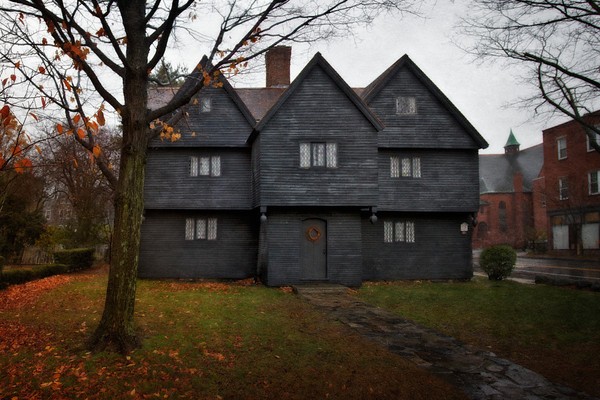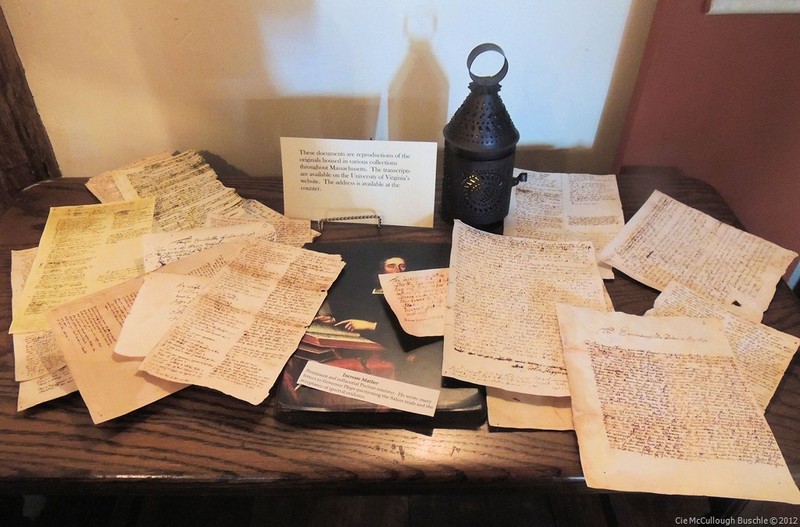Jonathan Corwin House (The Witch House at Salem)
Introduction
Text-to-speech Audio
Images
The Corwin House is now known as the "Witch House" and home to a museum.

Transcripts of the witch trials inside the house educate visitors on the witch trials.

The Corwin house in 1642, when it still belonged to Richard Davenport.

Backstory and Context
Text-to-speech Audio
Jonathan Corwin was born on November 14, 1640 in Salem, Massachusetts. Corwin purchased this house from Captain Richard Davenport on February 11, 1674, and he lived here for over forty years. The house was partially finished when purchased; it was remodeled several times before being converted into a museum. The home was acquired and renovated by Historic Salem in 1946 and opened as a museum in 1948. The museum offers a glimpse into the life of Jonathan Corwin and includes many artifacts relating to the witch trials.
Corwin quickly climbed the ladder of the elite in Salem, working as a shipbuilder, merchant, and importer of British goods. In 1662, Corwin’s younger sister Abigail married into the Hathorne family. Both Jonathan Corwin and John Hathorne served as judges during the examinations of the witch trials and decided if a citizen was guilty of practicing witchcraft.
According to the book Death in Salem: The Private Lives Behind the 1692 Witch Hunt, Corwin sometimes used the eastern front room of this house to conduct interviews and interrogations. Although twenty were executed and many in Salem acknowledged their role in the hysteria, there is no evidence that Corwin expressed remorse for his involvement in the witch trials of 1692. Corwin died in 1718 and is buried at Broad Street cemetery in Salem, MA.
In the 1940s, the city of Salem wished to enlarge North Street. This would have resulted in the demolition of the Corwin house. However, Salem citizens raised $42,000 and saved this house, along with the neighboring Bowditch House. The house now stands approximately 35 feet back from its original location. The home was later restored by historic Salem in 1946 and opened as a museum two years later.
Sources
Foulds, Diane E. Death in Salem : The Private Lives behind the 1692 Witch Hunt. Guilford, Conn.: Globe Pequot, 2010.
H W B. "HISTORIC SALEM---"WITCH HILL"---"WITCH HOUSE," ETC." Oneida Circular (1871-1876) 8, no. 12 (1871): 94.
Eusebius. "SALEM WITCHCRAFT." New York Observer and Chronicle (1833-1912) 34, no. 28 (1856): 221.
Drake, Samuel. "THE OLD WITCH-HOUSE AT SALEM." Appletons' Journal of Literature, Science and Art (1869-1876) X, no. 245 (1873): 673.
